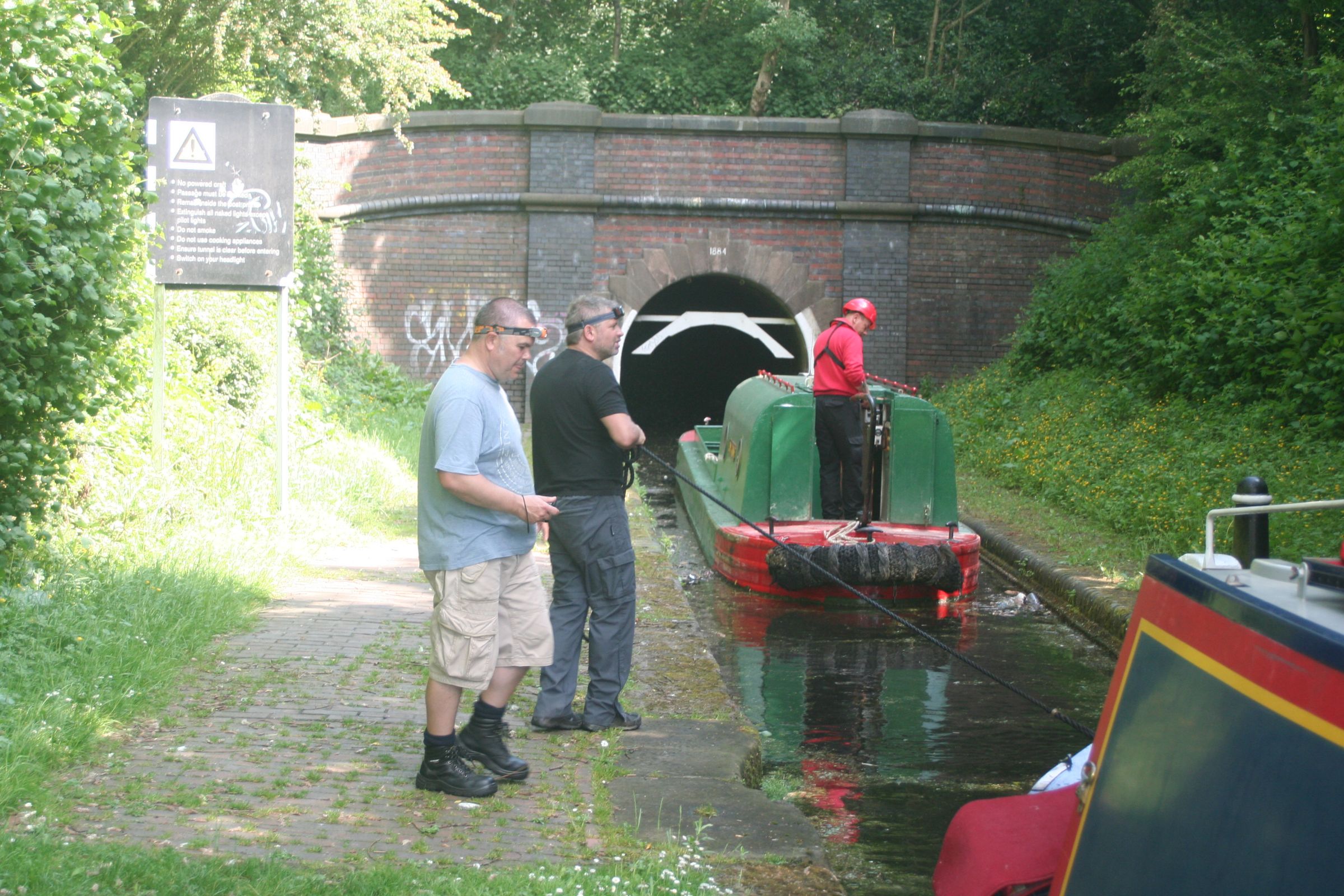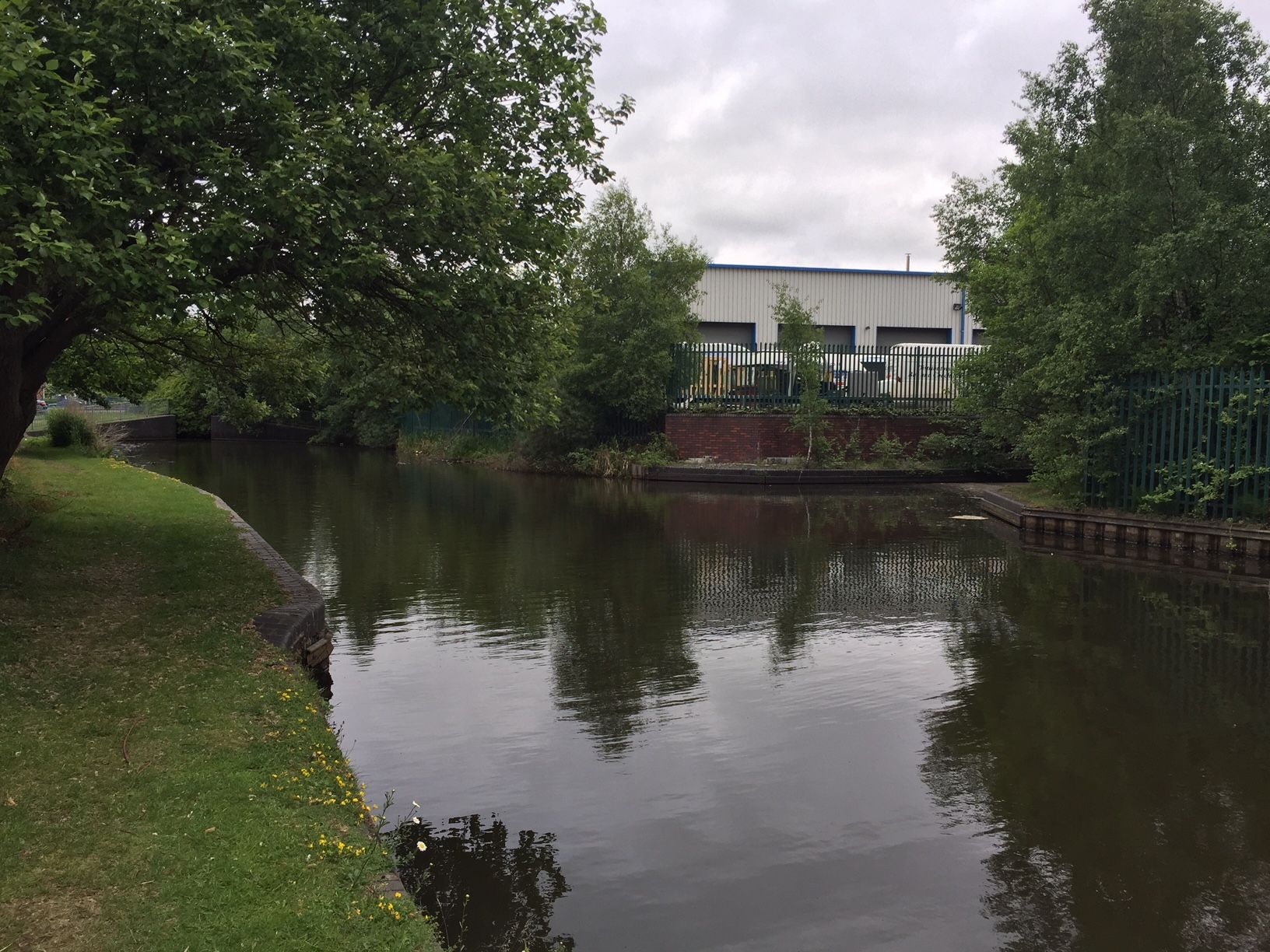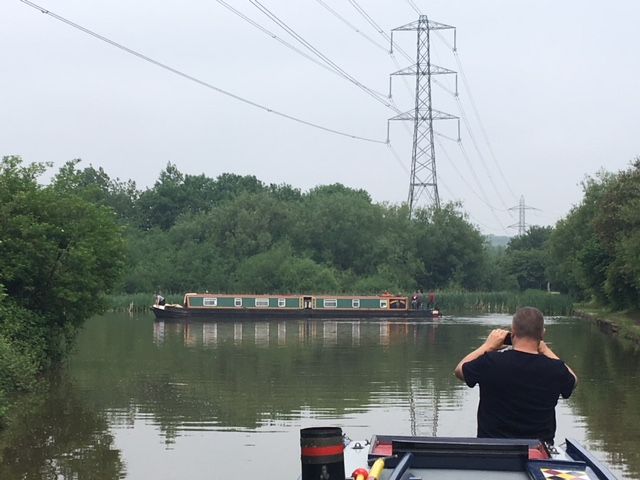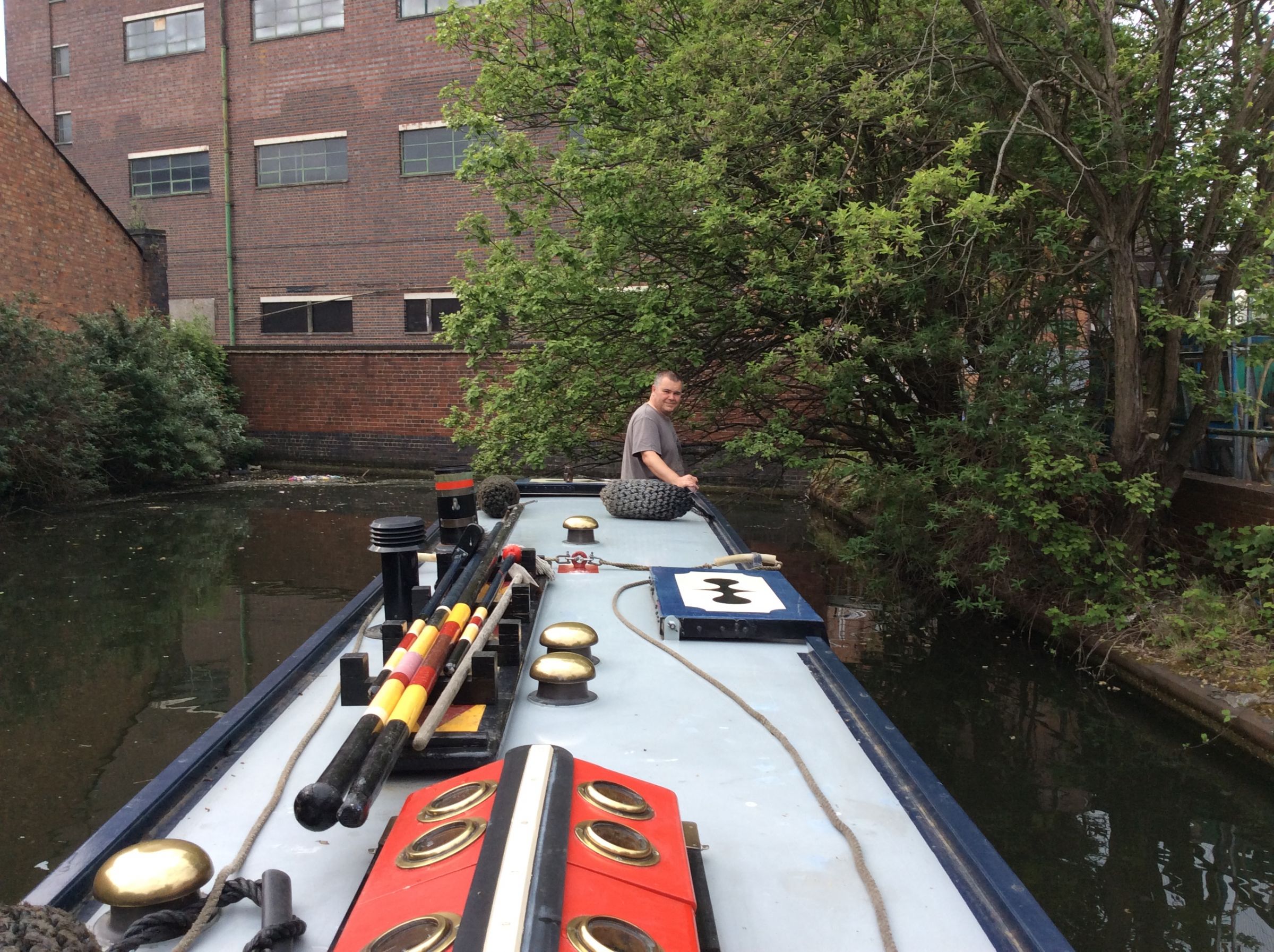

Jonny P
Member-
Posts
5,442 -
Joined
-
Days Won
7
Content Type
Profiles
Forums
Events
Gallery
Blogs
Store
Everything posted by Jonny P
-
Agreed but we can’t lose sight of the fact that the navigational status of the UK’s inland waterways is upheld by significant amounts of public money. As users we should be grateful for that but from a taxpayers perspective the use of that money necessitates that reasonable opportunity to navigate inland waterways is afforded to any member of the public who wishes to take advantage of the facility. That’s a long way short of demanding a right for passage. Natural movement is one thing but critical dimensions shouldn’t move adversely as a result of repair that ultimately is intended to preserve navigation (if that’s what has happened). It seems a lot of people aren’t aware of the actual published dimensions for the K&A so it would be interesting to know if and how they have changed over time. JP
-
Go check out how and where the boat got stuck and the nature of the repairs. ETA - Thanks to AndrewIC you can now see on here.
-
It’s kind of both. Simplest being the one that requires least guesswork.
-
From the dimensions published by the navigation authority. Surely that’s the only relevant source? I’ll agree with your latter point and start a campaign to return the Birmingham line of the GU to narrow beam. And does that mean the Staffs & Worcs need not be maintained deep enough for John Jackson to load Roach? It’s not a point that has a single simple answer.
-
I did. It said the solution with the least assumptions should be favoured. Hence my response.
-
Disagree. Boat that is wider than published dimensions but has transited lock before gets stuck after it has been repaired seems to be established fact. You’re making an assumption about fenders. JP
-
Although I made a similar point about the repair there is potentially an issue with the boat because the published width is actually 4m (13’ 1”) and the boat is quoted as 13’ 6”. That leads to the question as to whether repair works should be allowed to impinge on existing dimensions so long as they remain no worse than the published dimensions or should the existing dimensions be preserved? So it may be that any narrowing at this location was actually designed but in that event the right course of action should perhaps be to publish the intention to make such a change. JP
-
The lock in question hasn’t been rebuilt in any case. The wing walls below the bottom gates were failing and CRT appear to have removed a short section of the wing wall and built a concrete retaining wall behind the line of the original wing wall that will be - but hasn’t yet been - faced with brick to match the original. The boat can’t have stuck on that work however there also appears to have been new lower wing walls repaired in concrete and these do form the boundary of the channel below water level. Either these are too narrow or the original wing walls adjacent to the repair have moved inward; possibly as a result of forces imposed during the repair. Either way it is almost certainly a problem with what appears to be a fairly rushed repair to the infrastructure and not a problem with the boat. JP
-
Invert is the word you were looking for. I agree it’s a different kettle of fish, probably to the extent the only sensible way to do it would be to completely remove every trace of the old lock and build a 100% new structure. JP
-
Nah, they cheated. Didn’t leg through. We didn’t have any assistance from the tug at all. The way they ballasted the boat isn’t allowed now either. Ballast can only be carried in spaces designed for the purpose. JP
- 195 replies
-
- silver propeller
- dead ends
-
(and 2 more)
Tagged with:
-
I recall Charley telling me he had been through on FM. Must have been before the rules on artificial ballast or some strings were pulled. Or maybe I misunderstood and meant he’d only been 20’ of the way though. If anyone is interested the DCT run a small number of full tunnel trips each year. Either that or ‘hire’ a boat that will fit. JP
- 195 replies
-
- silver propeller
- dead ends
-
(and 2 more)
Tagged with:
-
Do you mean this thing in the tunnel mouth? What was Felonious Mongoose doing beyond the normal limits of navigation? Did the skipper think he knew best? Surely not. All I know is that I was required to present myself to the DCT at the visitor centre to gauge the boat prior to passage even though I had agreed a south to north passage. It’s the gauge at the DCT visitor centre you have to be able to clear. JP ETA - who is that bloke?
- 195 replies
-
- silver propeller
- dead ends
-
(and 2 more)
Tagged with:
-
The gauge at the museum end is the only gauge. All boats have to be gauged there prior to passage. I had Vulpes gauged the day before passage as I went south to north and no one knows what you do in between the gauging and the passage. I’d had a couple of test runs under the gauge prior to the ‘official’ measurement to be sure about how to trim the boat. I wasn’t even letting the crew use any water out of the tank overnight but you might just find someone who desperately needs some fuel from you. JP
- 195 replies
-
- silver propeller
- dead ends
-
(and 2 more)
Tagged with:
-
Agreed. The arm just along from Cuckoo Wharf on the opposite side is my guess.
- 195 replies
-
- silver propeller
- dead ends
-
(and 2 more)
Tagged with:
-
Or perhaps it was because they knew the opposite was true?
-
£115 for a handle? It’s no wonder the vandals stole them. I offer a choice to crew on Vulpes;- 1. Bog standard double headed steel, or 2. As above, or 3. As above My Neal windlass lives in a secure place and only comes out for my personal use at Spon Lane locks. JP
-
Coping with the restrictions to save water is all very laudable but in reality I don’t think the Challenge in its usual format would work if they aren’t lifted. One of the principal drivers behind the Challenge is to encourage usage of the lesser used parts of the BCN which is mostly the northern reaches. With restricted availability of the Rushall and Walsall flights in particular it becomes difficult to plan use of those waterways. The majority of usage of these flights in the Challenge probably falls outside the window when they are currently open and that’s a simple fact of geography and time. You won’t be able to get back to Birmingham for 1400 if you can’t work down those flights before 0800 on the Sunday morning. There’s little point in holding an event to promote and protect usage of waterways that are effectively excluded from that event. I expect a solution will be found. JP
-
Best practice is not to hit the sides; how it’s achieved is secondary. I think the steering position may influence technique. If you are stood on the step of a traditional boat you are probably going to line up the middle of the boat with the far end of the lock. This is probably also easier on an uphill lock. On a cruiser stern more likely to look down the gunwale. The angle of approach may also be a factor. Doing a sharp S turn off a lock landing might require lining up one side; approaching at speed from the centre of the channel it’s easy to line up the middle. If lining up along one side be careful to allow for guard rails that can be below the water level. Just when you think you’re lined up with an inch to spare... JP
-
No 57. And one lock on the Lapworth flight. I saw a CRT employee do this last week.
-
Vulpes is built to sit as low in the water as possible and has a half decent sized prop. It’s not a craft entirely suited to shallow waters but I find if you proceed slow enough, observe the prop wash, let the boat swim and don’t force your way through you can feel your way along. I’ve also been lots of places on the BCN with an ex-GU motor and butty without much bother only to learn after the event that I’ve been through some apparently difficult if nigh on impossible situations. One thing I did notice last week was that there has been a lot of offside vegetation clearance. And to add, the worst I got stuck last week was below Wolverley Court lock when the front of the boat got blown across the channel while stopping to pick up the lock crew. Running aground on a little used arm is par for the course. I was off again after two minutes at Bumblehole. I don’t consider that a problem. JP
- 195 replies
-
- silver propeller
- dead ends
-
(and 2 more)
Tagged with:
-
I didn’t really have any issues last week other than around the debris barrier which kind of compels you to head toward the open end and thus toward the bank. I think the barrier leads to sediment sinking and forming a bar across the canal at that point in any case, I still ran aground on the way out when trying to keep more central. Of course I don’t need much room to wind which is an advantage. I tootled along on my nice low tickover and it took about 20 minutes to get there and back. The narrows adjacent to the tug lay-by at Gosty Hill is ‘orrible in terms of dirt and depth. It’s very shallow all the way through the bridges on the approach. Other than that it’s one of my favourite spots on the network. As I’m sure you know getting round the BCN in any boat without a fuss is mostly about mindset. JP
- 195 replies
-
- silver propeller
- dead ends
-
(and 2 more)
Tagged with:
-
I’ve heard a rumour he’s got a boat of his own.
- 195 replies
-
- silver propeller
- dead ends
-
(and 2 more)
Tagged with:
-
The stub of the Wednesbury Canal beyond Ryders Green (which is technically not the Ridgacre Branch) is probably now lost to navigation for ever due to reed growth - and doubtless associated silting - about half way along its length. All looks OK at the top end though. The BCNS made efforts to clean up Titford a couple of years ago and its no problem to transit right to the ends of both arms and through the main pool. Here’s a whole load of forum members enjoying the pools. Is there anywhere more soupy than the Old Hill end of Gosty Hill Tunnel? It’s an emulsion of dirt. JP
- 195 replies
-
- 1
-

-
- silver propeller
- dead ends
-
(and 2 more)
Tagged with:
-
Compton. It’s about half an hour beyond Autherley and you will likely achieve a faster average cruising speed than the Canal Plan default of 2.5 mph and your first day and a bit has very few locks. If you have six and a bit days how about you mix up the stopping points between out and back and aim for something like;- Day 1 : Norbury to Gnosall Day 2 : Gnosall to Compton (fish and chips or pub) Day 3 : Compton to Swindon (Green Man is a proper local pub with food) Day 4 : Swindon to Whittington and back to Kinver Visitor Moorings Day 5 : Kinver to Wombourne (Round Oak) Day 6 : Wombourne to Brewood Day 7 : Brewood to Norbury Shortest day of 4 hours 17 mins. Day 2 and Day 6 are between 6 and 7 hours but that’s to clear Wolverhampton. JP
-
Unidentified forum member at the end of the Digbeth branch of the Birmingham & Fazeley (otherwise known as Typhoo basin).
- 195 replies
-
- silver propeller
- dead ends
-
(and 2 more)
Tagged with:




